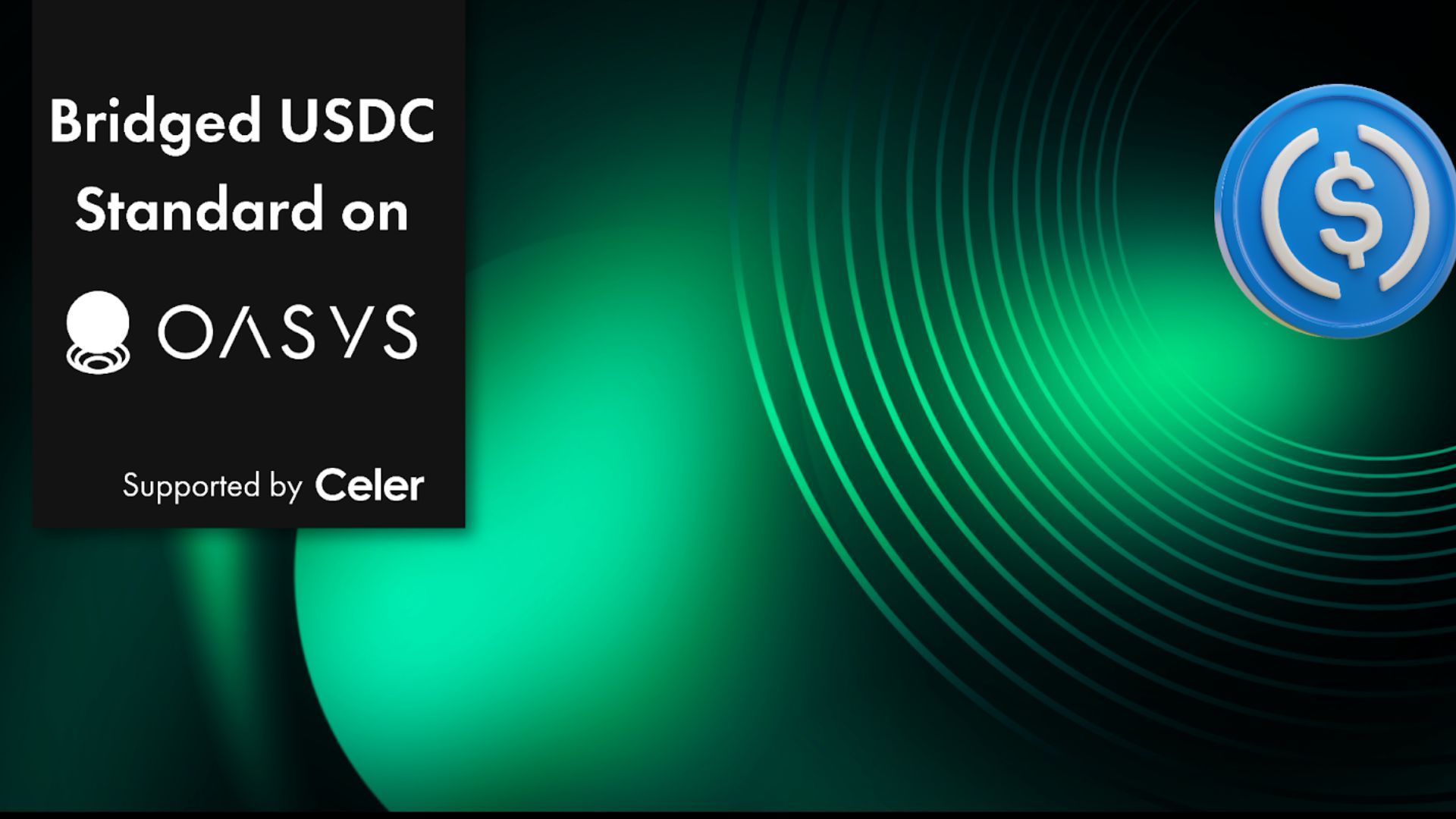-
Oasys partners with Celer Network to inaugurate the USDC bridging service.
-
The collaboration aims to accelerate the adoption of dollar-denominated payments across Web 3.
-
The gaming platform accounted for 88% of transactions on cBridge in the past 24 hours.
Blockchain video gaming ecosystem Oasys announced its partnership with Celer Network, a non-custodial asset bridging platform to initiate bridged USDC standard on Oasys blockchain. The latest launch of the bridged USDC standard aims to enhance financial transactions across Oasys and strengthen the economic state of the gaming ecosystem.
Circle, the company behind the famed USDC stablecoin, introduced the Bridged USDC Standard to enable a potential upgrade path from bridged USDC to native USDC. This aims to aid the addition of Native USDC to upcoming blockchains, increasing users’ trust that the asset they're using is fully reserved and always redeemable 1:1 for US dollars.
Circle Selects Oasys For its Bridge USDC Standard
The prominence of USDC as a leading stablecoin in the decentralized finance spaces has seen many upcoming projects create bridged USDC to serve as a proxy to native USDC, enhancing crypto-economics across the new ecosystems. This enables faster adoption for the platforms and boosts financial activity before a potential upgrade to native USDC on the platform.
The Bridged USDC Standard will allow more platforms to switch their bridged USDC to native USDC. However, Circle selects eligible platforms to convert their bridged USDC to native USDC. In general, Circle’s decision to upgrade a particular form of bridged USDC to native USDC may be subject to additional terms and conditions, a statement from Circle reads.
Oasys was selected as one of the eligible platforms to transition from bridged USDC to native USDC, in collaboration with Celer Network. Users can now bridge their Bridged USDC, which is backed by USDC locked in Ethereum-based smart contracts, into native USDC (denoted by USDC.e).
Oasys Accounts For 80% of Celer Bridge Transactions
The move welcomed thousands of transactions on Oasys, as users rushed to switch their USDC.e to USDC using Celer Bridge (cBridge). According to Celer Network explorer, Oasys accounted for 88% of the total daily transactions on cBridge on July 3rd, with 2980 transactions completed on cBridge from Oasys.
Image: Celer IM Scan
Celer Bridge recorded a total daily transaction volume of 3625 txns on July 3rd, representing a 15% decline over the past 24 hours.
Users Given One Year To Swap To USDC.e
With the goal of enhancing gaming and development across its ecosystem, Oasys also announced a new roadmap for adopting the new Bridged USDC Standard. The ‘comprehensive roadmap aims to give users and developers a full year to swap their bridged USDC, or legacy bridged USDC (Celer) with the native USDC (USDC.e). This will give users on the platform enough time to swap their tokens across the cBridge, with the utmost levels of security implemented.
More information on the bridging process for the native USDC token is available on the Celer Bridge and Oasys pages.
Disclaimer: This article is provided for informational purposes only. It is not offered or intended to be used as legal, tax, investment, financial, or other advice


